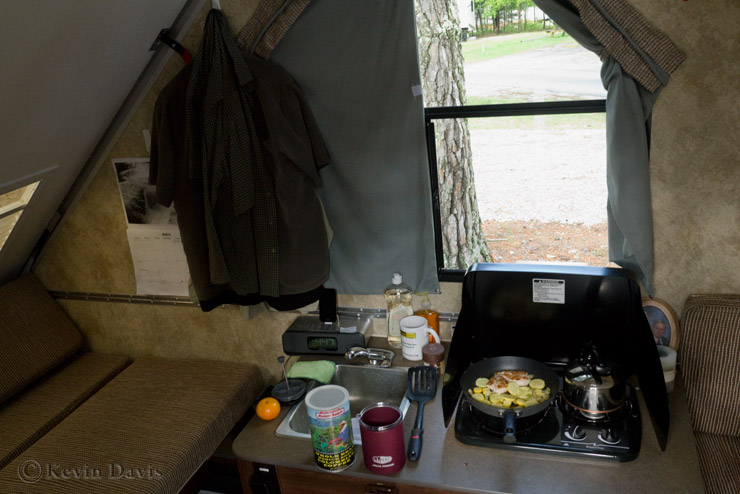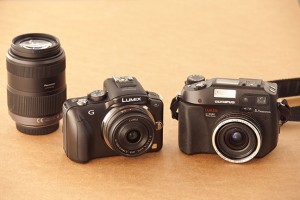 Maybe you are running out of storage space on your computer … because of video or fat megapixel photos. Or maybe you need to backup your files, for safety (in case your computer storage drive should die). You might save to optical disk (CD, DVD, or BluRay disc) but the storage capacity is quite limited. A standard DVD will store less than 5GB. A BluRay disc stores up to 25GB and a dual-layer BluRay disc will store 50GB. But that is still not enough.
Maybe you are running out of storage space on your computer … because of video or fat megapixel photos. Or maybe you need to backup your files, for safety (in case your computer storage drive should die). You might save to optical disk (CD, DVD, or BluRay disc) but the storage capacity is quite limited. A standard DVD will store less than 5GB. A BluRay disc stores up to 25GB and a dual-layer BluRay disc will store 50GB. But that is still not enough.
You may be contemplating adding a disk drive with larger capacity. But sooner or later, you will fill up that amount and still need more. Cramming bigger disk drives into your computer is only a temporary solution. External disk drives provide a long-term solution of unlimited storage.
Let me suggest a relatively low-cost option called an external hard drive dock. A dock is basically an adapter that allows you to use internal type drives externally. Why? Because internal type drives simply cost less than external drives. If you divide the price by the number of gigabytes, external drives range from 6 – 20 cents per gigabyte, while internal disk drives range from 4 – 14 cents per gigabyte. Removing a drive from the dock, then inserting another drive, requires mere seconds.
How does an external disk drive or dock connect to your computer? Here is a quick survey of available interfaces.
USB 2.0 : up to 480 megabit/sec
USB 3.0 : up to 4.8 gigabit/sec
eSATA II : up to 3 gigabit/sec
eSATA III : up to 6 gigabit/sec
1394a FireWire 400 : up to 400 megabit/sec
1394b FireWire 800 : up to 800 megabit/sec
1394d Firewire 6400 : up to 6.4 gigabit/sec
Thunderbolt : up to 10 gigabit/sec
Strangely, these interfaces are typically rated for throughput in units of Mb/sec (megabits per second), while disk drives are rated in terms of MB/sec (megabytes per second). The difference is simply a factor of eight.
Inside your computer, long-term data storage devices are typically based upon SATA.
SATA II (a.k.a. SATA 3Gbps) provides data transfer capability much faster than most disk drives. (A SATA II disk drive will typically move data to-and-from your computer at a rate less than 700 megabit/sec.) SATA III was introduced to support solid-state drives (300 to 500 megabyte/sec). External SATA (eSATA) allows external devices to connect directly into your SATA storage system. This is ideal for connecting external storage, but most computers do not include any eSATA ports.
Firewire has some interesting technical features, but current products do not offer speeds above 800. Thunderbolt is very new, currently available only with the new 2011 Apple MacBook Pro. (Just within the past couple months, there has been a rumor that Sony will soon offer Thunderbolt on an upcoming Vaio laptop computer.)
In 2011, USB 3.0 seems to be the clear winner. Simplistic speed ratings suggest that USB 3.0 is faster than eSATA II, but some tests have reported that this is not necessarily true for currently available USB 3.0 products. While USB 3.0 usually outperforms eSATA when reading data, eSATA may have a slight advantage when writing data.
If you already have an eSATA interface, you can buy an adapter that converts between eSATA and USB 3.0. (available from Bytecc, Addonics, and NewerTech.) Cost is about $35 – $40. But for a bit less money ($30), you can buy an expansion card that adds USB 3.0 ports easily to your existing computer (if you have an available PCIe expansion slot).
If you are buying a new computer in 2011, read the specifications carefully to make sure you get USB 3.0. While you can connect a USB 3.0 devices to a USB 2.0 device, they will communicate at the lower speed.
If you are looking for a high-capacity disk drive, here is a 2010 comparison of 2TB drives:
http://hothardware.com/Reviews/Definitive-2TB-Hard-Drive-Roundup










